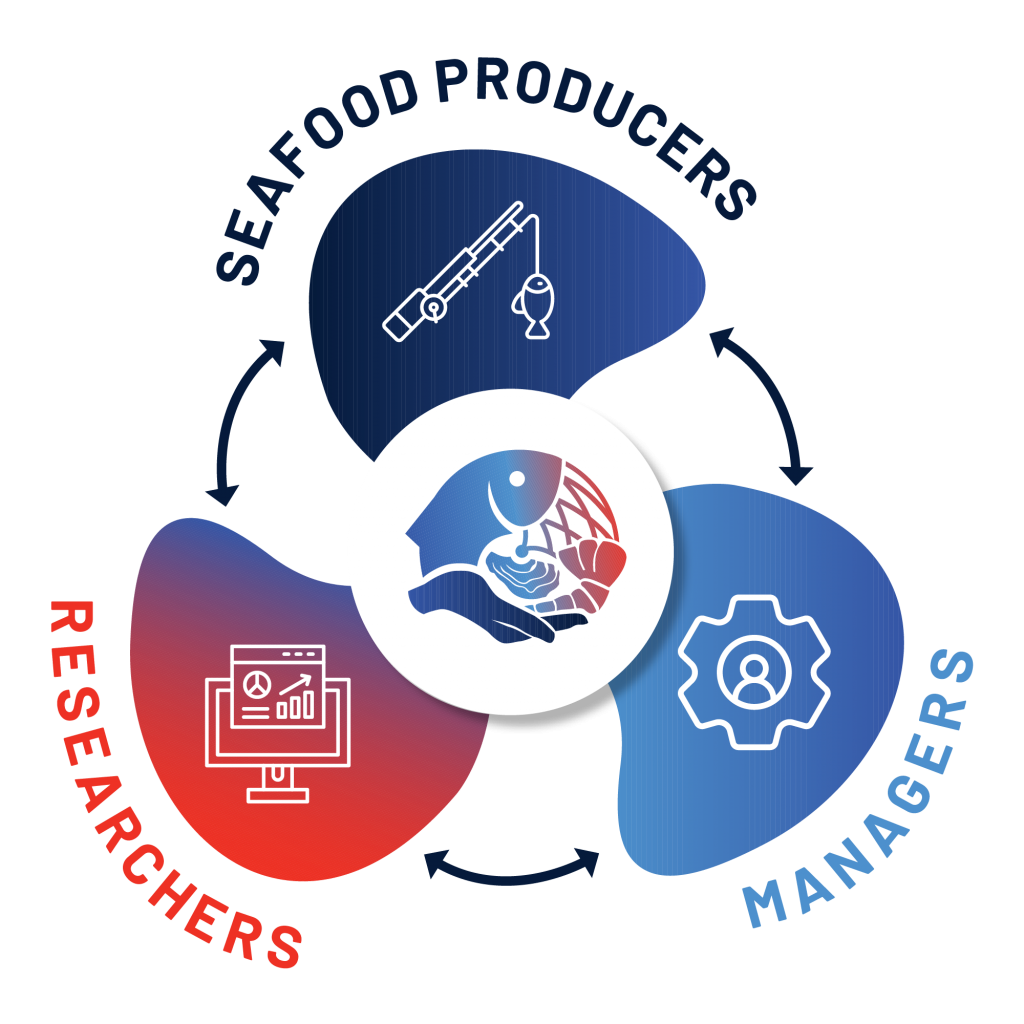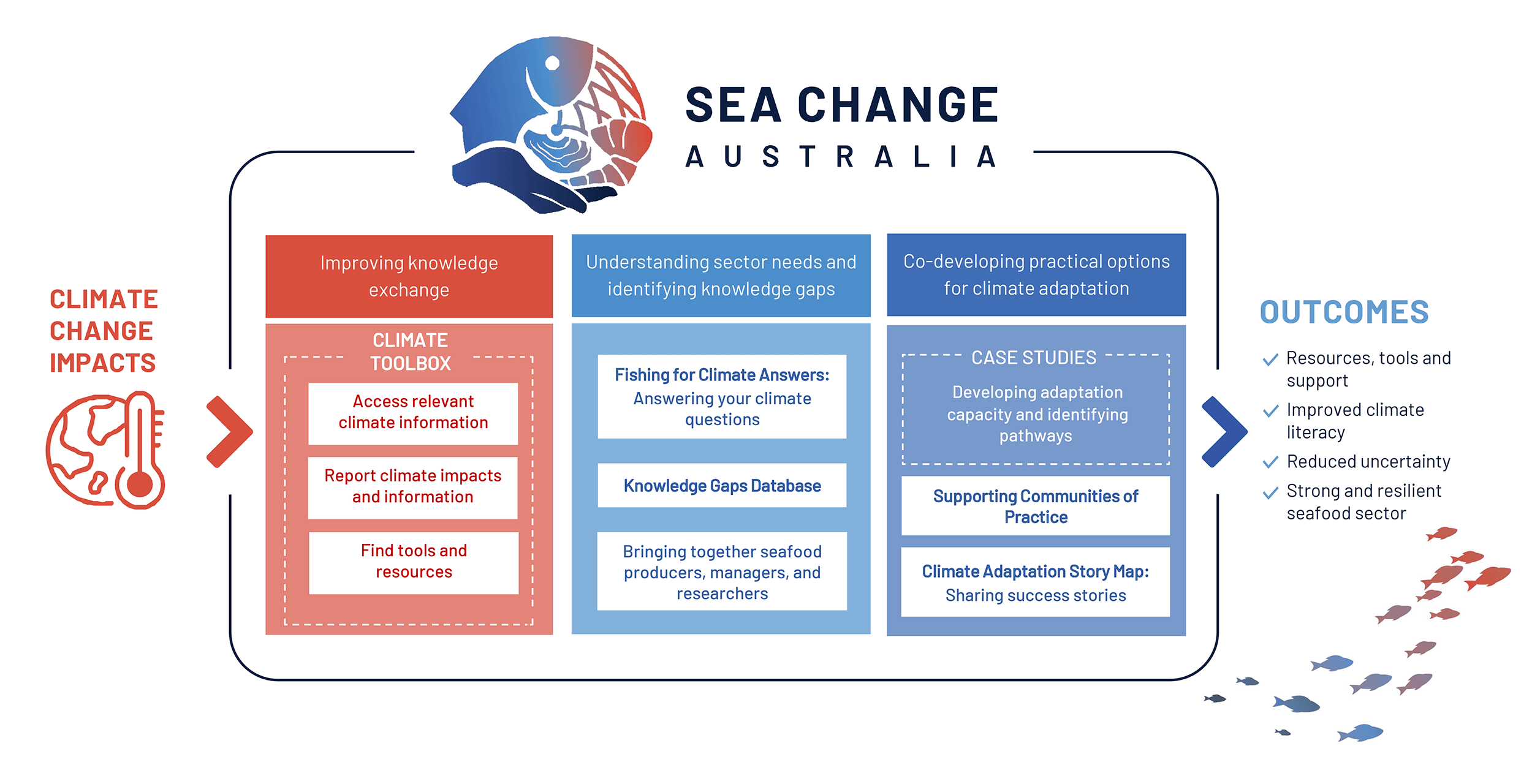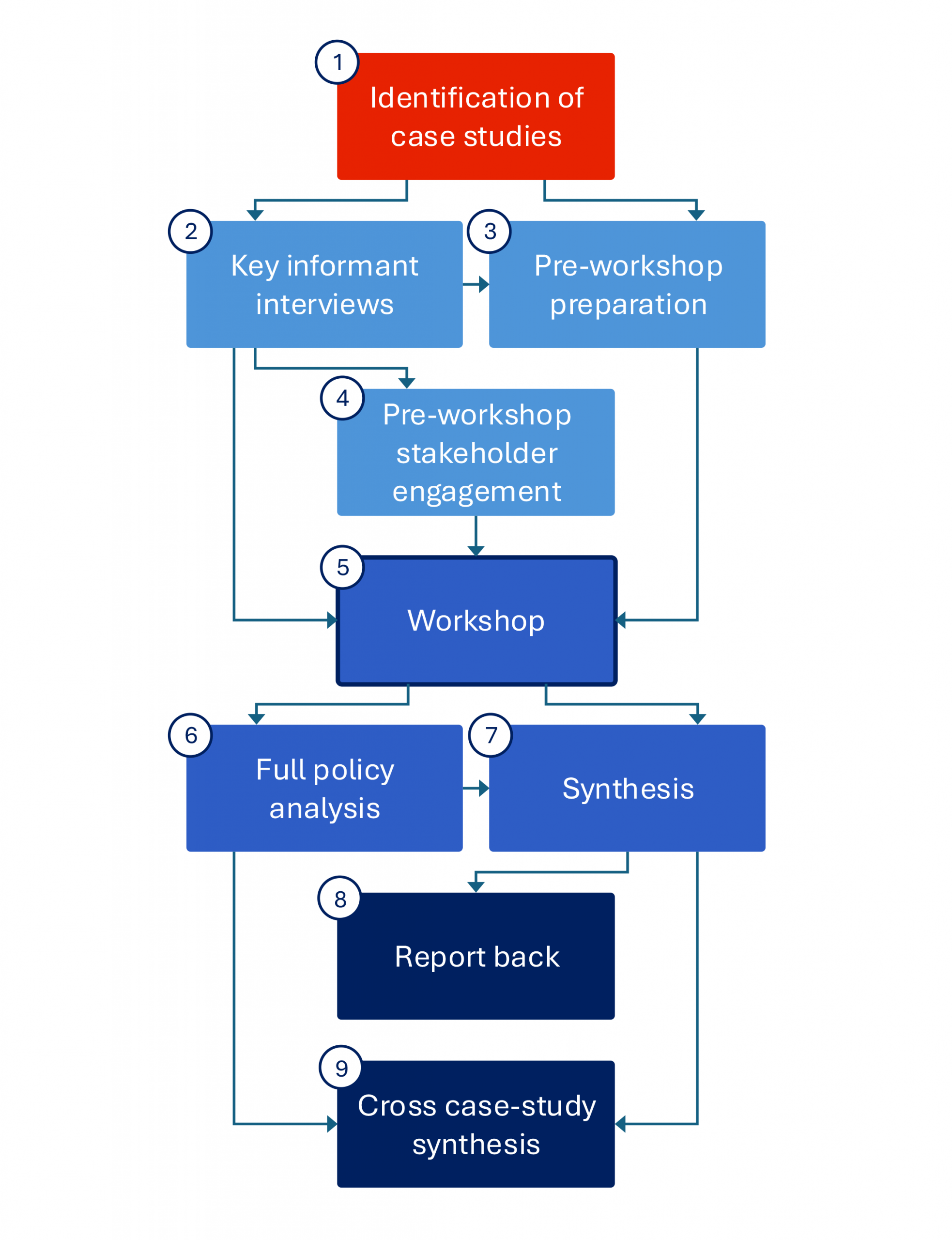Project overview
Sea Change Australia brings together fishers, aquaculture producers, industry, managers, and researchers to facilitate knowledge exchange and co-develop climate-resilient options for strong and healthy fisheries and aquaculture sectors in Australia.
Climate change poses a growing threat to fisheries and aquaculture in Australia. Fisheries and aquaculture stakeholders across Australia need relevant climate information tailored to their changing needs. They also need ways to share how they are currently dealing with climate change and how they could improve their responses.
A growing threat
Climate change poses a growing threat to fisheries and aquaculture in Australia. Fisheries and aquaculture stakeholders across Australia need relevant climate information tailored to their changing needs. They also need ways to share how they are currently dealing with climate change and how they could improve their responses.

Objectives
1. Facilitating access
Facilitate access to climate relevant information and improve knowledge exchange between researchers, managers, and industry.
2. Understanding needs
Understand the seafood sector’s needs and knowledge gaps to support existing and potential climate adaptation efforts.
3. Co-developing options
Co-develop practical, localised options for climate adaptation, while supporting communities of practice and highlighting success stories, to strengthen the health and resilience of fisheries and aquaculture sectors in Australia.
Approach
The Sea Change Australia project works with Australian fisheries and aquaculture sectors to develop ways to prepare for and respond to climate change impacts.
We are creating a nationwide two-way knowledge a nationwide two-way knowledge exchange between researchers and sector stakeholders. Our main goals are to understand how sectors are already adapting to climate change, identify what’s stopping further adaptation, and co-develop practical, sector-specific options for climate resilience.

Our approach to 'Fishing for Climate Answers'
Sea Change Australia creates opportunities for people across the seafood sector — including fishers, aquaculture operators, industry, researchers, and managers — to ask questions about climate change.
These questions can be broad (like “How is today’s climate change different from the past?”) or specific (like “How will species X shift in the next 10 years?” or “What’s happening to currents in my region?”).
This approach builds on our successful Curious Climate model, where community questions are collected, sorted, and answered by experts. The most common or important questions are addressed through a mix of in-person and digital formats — such as forums, industry events, roadshows, videos, and articles — tailored to each region or sector.
This method helps researchers understand what matters most to the seafood community and how to communicate climate science in ways that are practical and relevant. It also gives us the chance to hear how people want information delivered, and what they still need to know.
Importantly, we’re also learning from the real-world changes that fishers and producers are already making in response to climate change. These on-the-ground solutions are essential to inform broader planning and policy.
When we respond to questions, we’ll also spotlight local researchers who are working on those specific issues. Sea Change Australia aims to strengthen trust and connections between industry, researchers and decision-makers at all levels.
And because people learn best from each other, we’ll be collecting and sharing success stories — real examples of how fisheries and aquaculture operations are adapting. These stories can inspire action and offer hope for the future.
Our approach to case studies
There are 12 case-study fisheries and aquaculture operations, selected from around the country, to engage with stakeholders and explore how these sectors could adapt (and are adapting) to climate change.
Key aspects of the Sea Change Australia case studies are exploring how to improve access to climate information and clarifying the policy and regulatory environment to catalyse adaptation. Each case study is tailored to the needs of the local sector but overall follow this structure:
